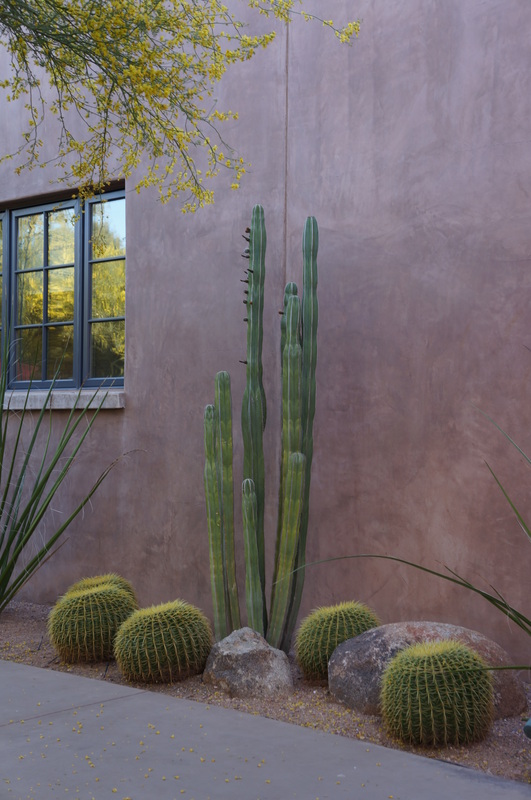SITE-WIDE STRATEGIES | NATIVE PLANTING PALETTE
|
When
designing for the desert, the inclusion of native and near-native species in
the overall planting design is very important. It is important because of the
sensitivity and context of the surrounding Sonoran Desert, but it is important
to plant species that are specifically adapted to the challenging environment.
This is especially important near the wild desert environment, where the
possibility of invasive species has the potential to outcompete desert natives
and compromises the integrity of the original Sonoran Desert environment. This
is especially most important near waterways, where invasive species can quickly
spread up and down the course of the river, into new communities further and
further away.
Native plantings are uniquely adapted, but can also be very beautiful, and when planted correctly, can provide a lush feeling for a much lower environmental cost, especially in water and soil amendments. It also creates an educational opportunity for visitors to the park. Though there are other places that highlight local, native, desert-adapted plants, this is the only location in this area with any possibility of native plant interpretation, especially of the unique desert plants of the Upper Sonoran Desert habitat. Native plantings create a new visitor amenity, and bring new types of visitors to the park while providing an excellent example of environmental stewardship. Native plantings provide another interpretive benefit in the form of edible plants. Although specific heritage gardens have been proposed in the site plan for the park itself, the medicinal and nutritional benefits of some of these native desert plants can be highlighted through interpretive signage and programming, harvesting and education visitors on the benefits of these native desert plants, changing the way that they see the desert that surrounds them. Plantings can be specifically chosen for their desired attributes; native plants that attract butterflies, bees, and other animals (like bats) can be grouped together to create a pollinator garden, which will give seasonal interest to the planted area. Many of the plantings proposed in this master plan are at their most beautiful during the peak visitor season between January and March, and provide a dramatic backdrop for the historic features of the park. Plantings can also be chosen that vary in their blooming season, creating a dynamic natural environment that always shows a different face to repeat visitors. Lastly, plants that are native to the Sonoran Desert and surrounding areas are used in the design, thus highlighting some of the unique elements of this region. |
